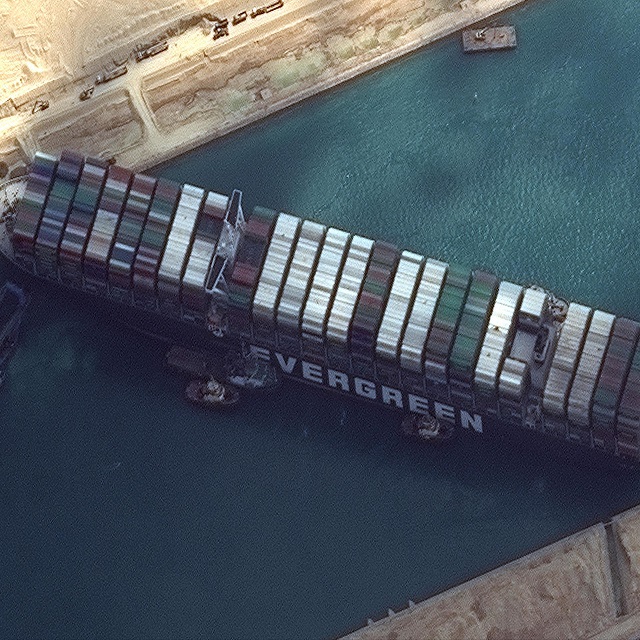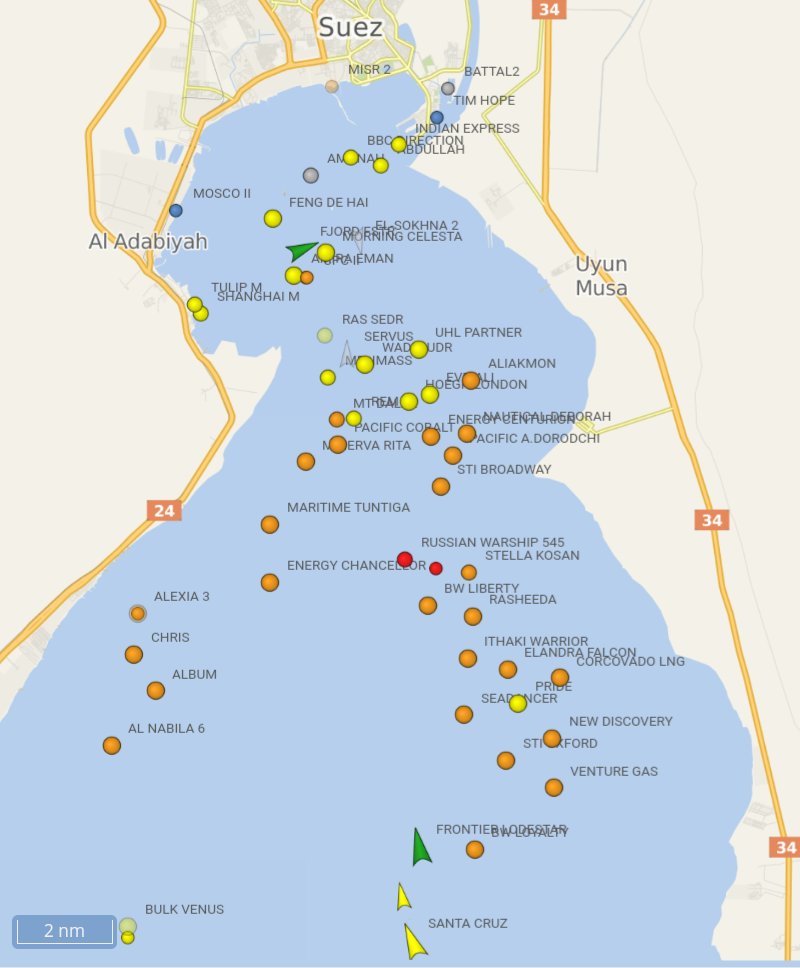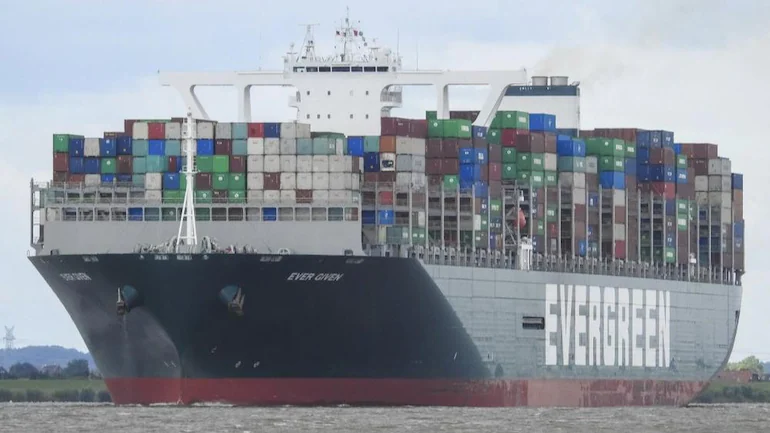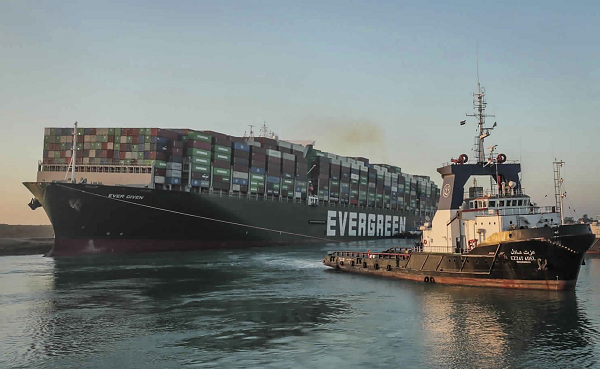On March 23, the large container ship “Changci” operated by Taiwan Evergreen Shipping, when passing through the Suez Canal, was suspected to have deviated from the channel and ran aground due to strong winds. At 4:30 am on the 29th, local time, with the efforts of the rescue team, the freighter “Long Give” that blocked the Suez Canal has resurfaced, and the engine is now activated! It is reported that the freighter “Changci” has been straightened. Two shipping sources said that the freighter had resumed its “normal route.” It is reported that the rescue team has successfully rescued the “Long Give” in the Suez Canal, but the time for the Suez Canal to resume navigation is still unknown.
As one of the most important shipping channels in the world, the blockage of the Suez Canal has added new worries to the already tight global container ship capacity. No one would have imagined that the global trade in recent days has been suspended in a 200-meter-wide river? As soon as this happened, we had to think again about the safety and unobstructed issues of the current Sino-European trade channel to provide a “backup” for the Suez Canal transportation.
1. The “ship congestion” incident, “butterfly wings” shook the global economy
Lars Jensen, CEO of the Danish “Maritime Intelligence” consulting company, said that about 30 heavy cargo ships pass through the Suez Canal every day, and one day of blockage means that 55,000 containers are delayed in delivery. According to calculations from Lloyd’s List, the hourly cost of the Suez Canal blockage is approximately US$400 million. The German insurance giant Allianz Group estimates that the blockage of the Suez Canal could cost global trade between US$6 billion and US$10 billion a week.
JPMorgan Chase strategist Marko Kolanovic wrote in a report on Thursday: “Although we believe and hope that the situation will be resolved soon, there are still some risks. In extreme cases, the canal will be blocked for a long time. This may lead to severe disruptions in global trade, soaring shipping rates, further increases in energy commodities, and rising global inflation.” At the same time, shipping delays will also generate a large number of insurance claims, which will put pressure on financial institutions engaged in marine insurance, or will trigger Reinsurance and other fields are turbulent.
Due to the high degree of dependence on the Suez Canal shipping channel, the European market has clearly felt the inconvenience caused by the blocked logistics, and the retail and manufacturing industries will be “no rice in the pot.” According to China’s Xinhua News Agency, the world’s largest home furnishings retailer, IKEA of Sweden, confirmed that about 110 containers of the company were carried on the “Changci”. British electrical retailer Dixons Mobile Company and Dutch home furnishing retailer Brocker Company also confirmed that the delivery of goods was delayed due to the blockage of the canal.
The same goes for manufacturing. The international rating agency Moody’s analyzed that because the European manufacturing industry, especially auto parts suppliers, has been pursuing “just-in-time inventory management” to maximize capital efficiency and will not stock up large amounts of raw materials. In this case, once logistics is blocked, production may be interrupted.
The blockage is also disrupting the global flow of LNG. The US “Market Watch” stated that the price of liquefied natural gas has risen moderately because of congestion. 8% of the world’s liquefied natural gas is transported through the Suez Canal. Qatar, the world’s largest liquefied natural gas provider, basically has natural gas products transported to Europe through the canal. If navigation is delayed, about 1 million tons of liquefied natural gas may be delayed to Europe.
In addition, some market participants worry that the prices of international crude oil and other commodities will skyrocket due to the blockage of the Suez Canal. In recent days, international oil prices have risen significantly. The prices of light crude oil futures delivered in May on the New York Mercantile Exchange and London Brent crude oil futures delivered in May have both exceeded $60 per barrel. However, industry insiders said that the market is worried that the sentiment of the supply chain has intensified, which has caused oil prices to rise. However, in response to the new round of the epidemic, tightening prevention and control measures will still curb demand for crude oil. In addition, the transportation channels of oil-producing countries such as the United States have not been affected. As a result, the upward space of international oil prices is limited.
2. Exacerbate the problem of “a container is hard to find”
Since the second half of last year, global shipping demand has increased sharply, and many ports have encountered problems such as difficulty in finding a container and high ocean freight rates. Market participants believe that if the blockage of the Suez Canal continues, a large number of cargo ships will not be able to turn around, which will increase the cost of global trade and cause a chain reaction.
According to data released by the General Administration of Customs of China a few days ago, China’s exports in the first two months of this year have again increased significantly by more than 50%. As the most important mode of transportation in international logistics, more than 90% of the import and export transportation of goods is completed by sea. Therefore, exports have achieved a “good start”, which means a large demand for shipping capacity.
According to the Russian Satellite News Agency recently quoted Bloomberg News, the price of a 40-foot container from China to Europe has risen to nearly 8,000 U.S. dollars (approximately RMB 52,328) due to the stranded freighter, which is nearly three times more than a year ago.
Sampmax Construction predicts that the current boost to commodity prices by the Suez Canal is mainly due to market expectations of rising transportation costs and inflation expectations. The blockage of the Suez Canal will further aggravate the tight supply pressure of containers. Due to the surge in global demand for cargo ships carrying containers, even bulk carriers have begun to fall short of demand. With the global supply chain recovery facing bottlenecks, this can be described as “adding fuel to the fire.” In addition to containers carrying a large number of consumer goods being “stuck” in the Suez Canal, many empty containers were also blocked there. When the global supply chain is in urgent need of recovery, a large number of containers have been shelved in European and American ports, which may aggravate the shortage of containers and at the same time bring great challenges to shipping capacity.
3. Our recommendations
At present, Sampmax Construction’s method to deal with the hard-to-find case is to recommend customers to stock more, and choose 40-foot NOR or bulk cargo transportation, which can greatly reduce costs, but this method requires customers to stock more.



